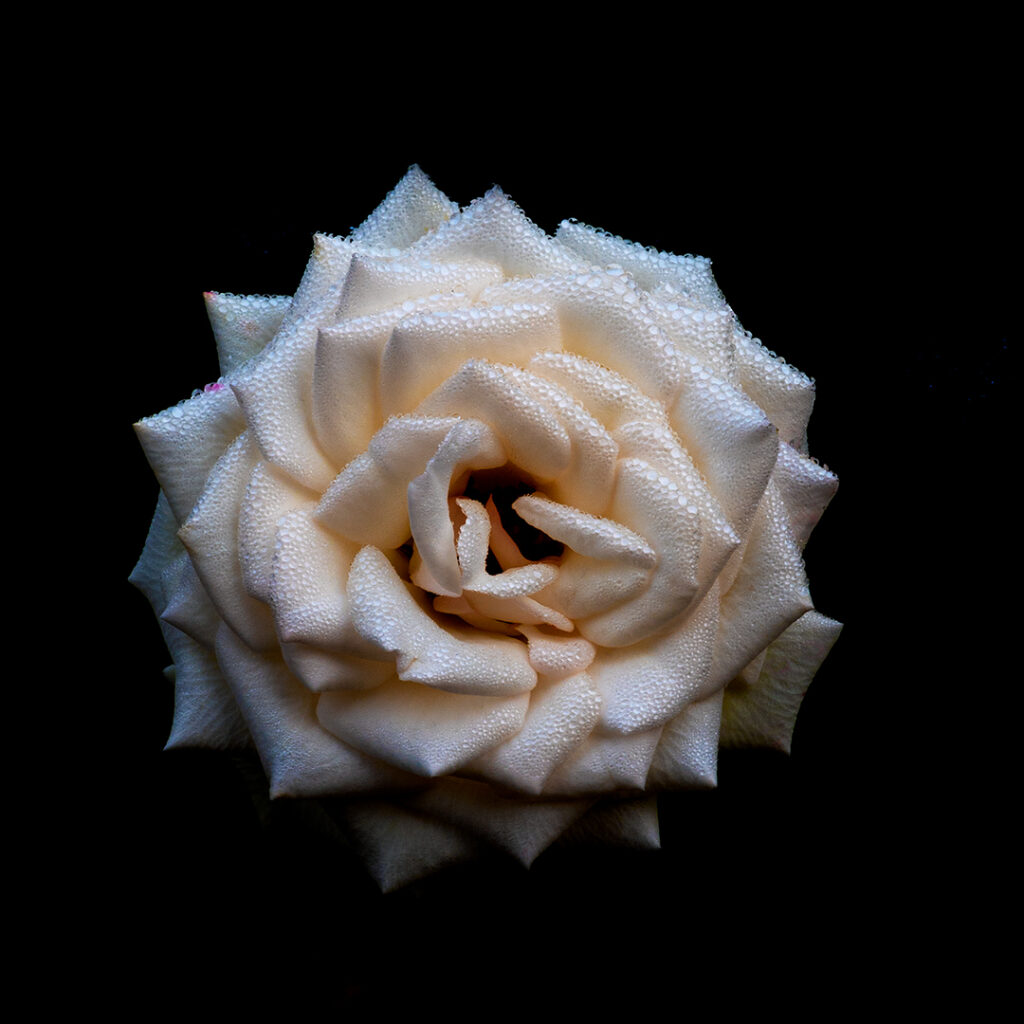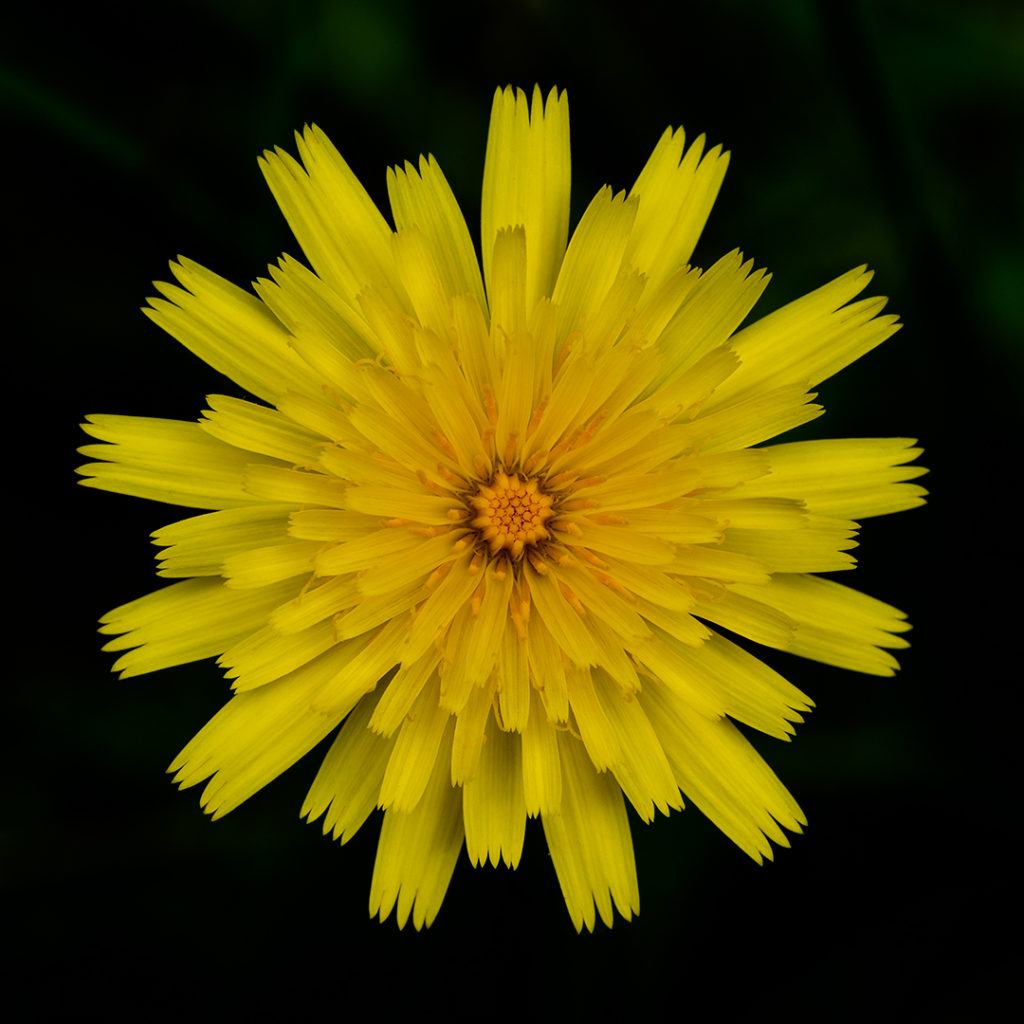This photograph of a flower was taken in a local rose garden. Like many such photos, it’s been enhanced to show aspects of the flower that, although they were subtle, still jumped out at me enough to want to share them. The very subtle colors of an ostensibly white flower, the overall form and symmetry, the water droplets speaking of a cool, damp, fall morning. All these things were there in the original view, but not as clear.
Click or tap on the picture, and you will see a version of the picture with no distractions around it. Then click or tap again and it will become an interactive picture that lets you look around and see the whole location where the picture was taken.
Swipe to pan around, and pinch to zoom in and out. Find the flower and tap it again to return to the original picture.









